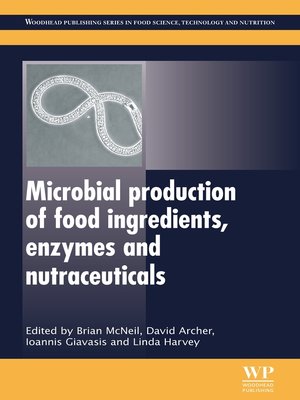Microbial Production of Food Ingredients, Enzymes and Nutraceuticals
ebook ∣ Woodhead Publishing Series in Food Science, Technology and Nutrition
By Brian McNeil

Sign up to save your library
With an OverDrive account, you can save your favorite libraries for at-a-glance information about availability. Find out more about OverDrive accounts.
Find this title in Libby, the library reading app by OverDrive.



Search for a digital library with this title
Title found at these libraries:
| Library Name | Distance |
|---|---|
| Loading... |
Bacteria, yeast, fungi and microalgae can act as producers (or catalysts for the production) of food ingredients, enzymes and nutraceuticals. With the current trend towards the use of natural ingredients in foods, there is renewed interest in microbial flavours and colours, food bioprocessing using enzymes and food biopreservation using bacteriocins. Microbial production of substances such as organic acids and hydrocolloids also remains an important and fast-changing area of research. Microbial production of food ingredients, enzymes and nutraceuticals provides a comprehensive overview of microbial production of food ingredients, enzymes and nutraceuticals.Part one reviews developments in the metabolic engineering of industrial microorganisms and advances in fermentation technology in the production of fungi, yeasts, enzymes and nutraceuticals. Part two discusses the production and application in food processing of substances such as carotenoids, flavonoids and terponoids, enzymes, probiotics and prebiotics, bacteriocins, microbial polysaccharides, polyols and polyunsaturated fatty acids.Microbial production of food ingredients, enzymes and nutraceuticals is an invaluable guide for professionals in the fermentation industry as well as researchers and practitioners in the areas of biotechnology, microbiology, chemical engineering and food processing.
- Provides a comprehensive overview of microbial flavours and colours, food bioprocessing using enzymes and food biopreservation using bacteriocins
- Begins with a review of key areas of systems biology and metabolic engineering, including methods and developments for filamentous fungi
- Analyses the use of microorganisms for the production of natural molecules for use in foods, including microbial production of food flavours and carotenoids







